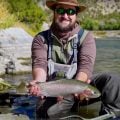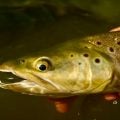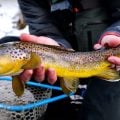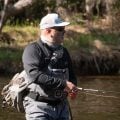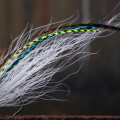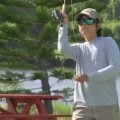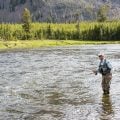How to Catch More Trout on Beetles and Ants
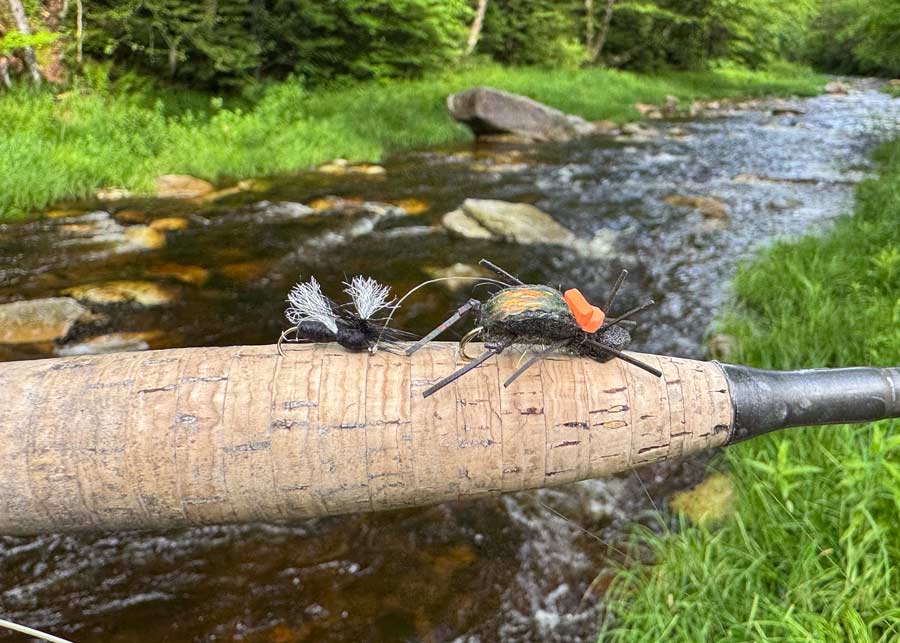
From mountain freestone streams to lowland rivers, and from April through October, ants and beetles should be part of your dry-fly arsenal. Photo: Phil Monahan
When it comes to fishing terrestrials, grasshoppers are the most popular kids in school. Anglers wait for months for these big bugs to appear and then fish hoppers with complete confidence throughout the entire summer. But if grasshopper patterns are the only terrestrials you’re fishing, you’re missing out on a lot of action.
Both ants and beetles are ever-present during the summer, and trout absolutely love them. In fact, on many rivers trout will rise up to eat a drifting ant or beetle when nothing else will attract their attention. Yet for some reason many fly anglers consider them to be a last resort or even choose to ignore ant and beetle patterns all together. This is a mistake, as fishing with ants and beetles in the right situations can draw topwater strikes from trout before, after, and even during other summer hatches.
Fringe Season Bugs
Unlike grasshoppers which are most active from mid to late summer—and well into fall in some years—ants and beetles can be crawling and flying around from March all the way to October in most places. They are also drawn to habitats close to water, where the vegetation and food sources are abundant, making them active along waterways until the first frost of autumn. Because they provide a nearly constant food source for trout, ants and beetles provide good dry-fly action both before and after other terrestrial insects have come and gone.
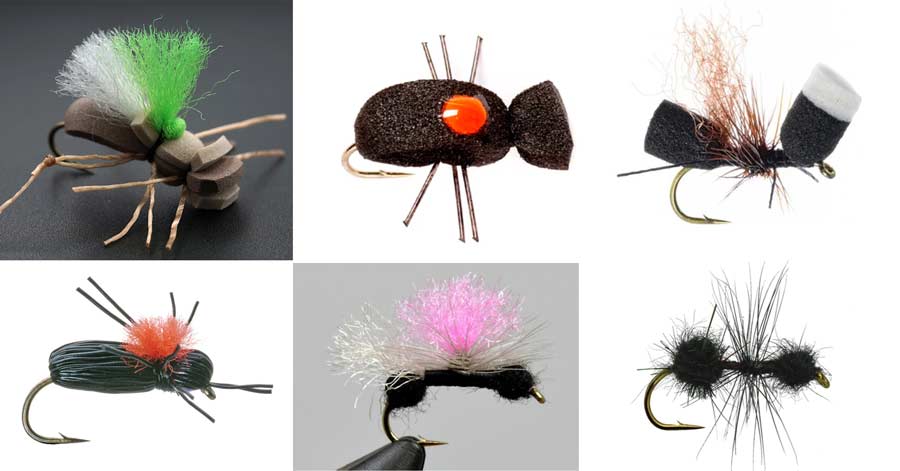
Clockwise from upper left: Fat Albert, Quick Sight Beetle, Bionic Ant, Fur Ant, Bloom’s Parachute Ant, and Dave’s Black Beetle.
My favorite ant and beetle patterns are large, buoyant foam patterns like the Fat Albert, Quick Sight Beetle, and the Bionic Ant. These flies float well in fast water, attract a lot of trouty attention, and can take a lot of punishment from hungry fish without completely disintegrating. However, if I’m fishing in slow, clear water where trout can be picky, I’ll switch to more subtle patterns like Dave’s Black Beetle, Bloom’s Parachute Ant, and Fur Ant. These smaller, more realistic flies are perfect for more selective fish that need time to watch the fly and mull things over a bit before they decide to feed.
The first prime time to fish ants and beetles is in early summer, when water temperatures have warmed and hatches of mayflies, caddisflies, and stoneflies have begun. This aquatic insect activity triggers trout to start actively hunting the surface for food, and these opportunistic predators find it hard to resist a drifting ant or beetle. When you’re waiting for hoppers to show up, drift ants and beetles in slow-moving pools, runs, and tailouts, especially on bright sunny days when insects are in force.
Late summer is the second prime time for ants and beetles, especially on highly pressured waters. The water is usually quite low, trout have seen a hundred hopper patterns drift over their heads, and there’s a notable decrease in aquatic-insect activity. But ants and beetles are at their peak. In preparation for the coming frost, these insects become increasingly active along the edges of rivers and streams where they inevitably fall into the water to be devoured by wary, yet hungry trout.
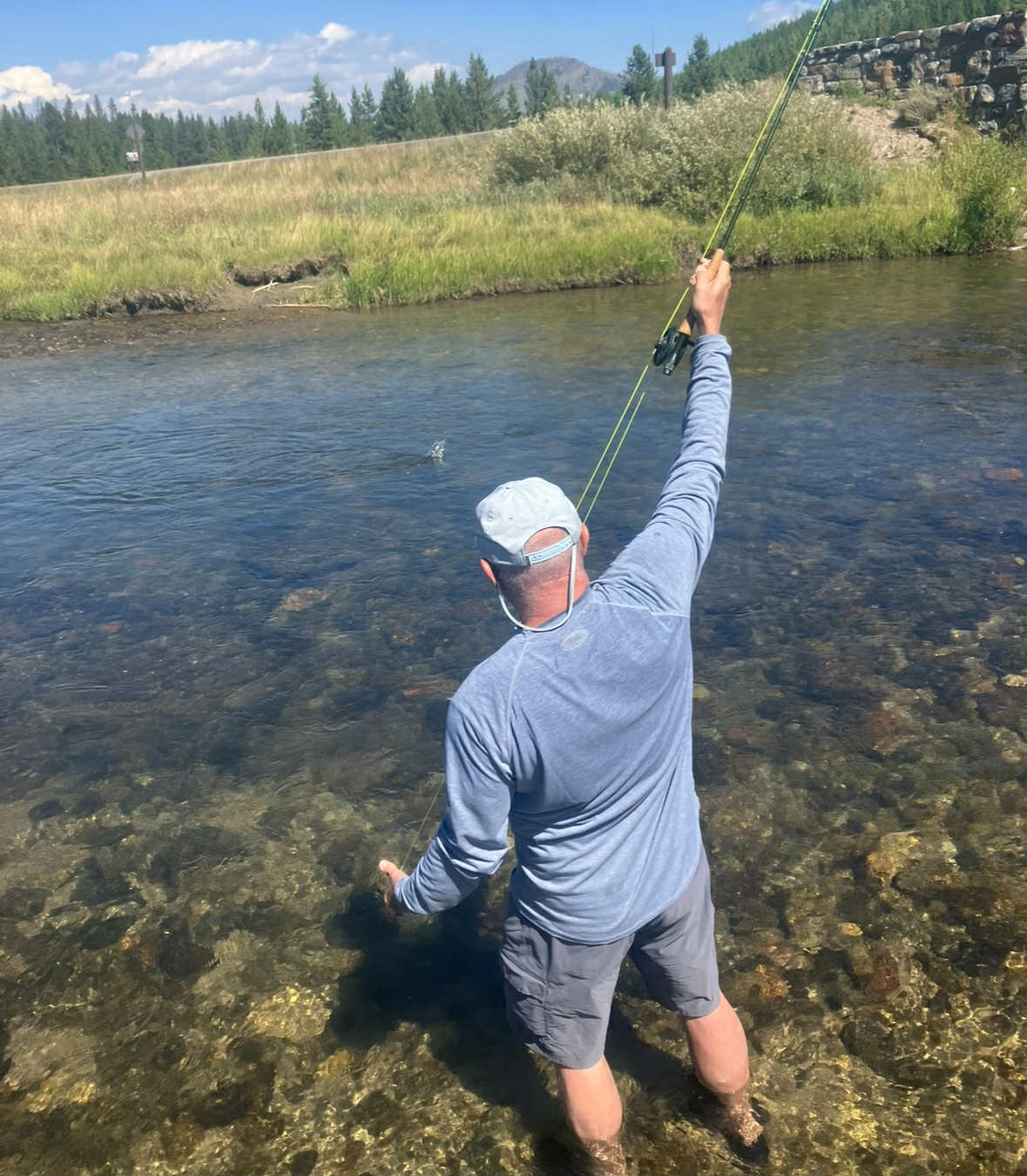
When there are no other insects on the water, an ant or beetle imitation will draw strikes from trout accustomed to looking upward. Photo: Kubie Brown
This is a fantastic time to drift ants and beetles along the banks, paying special attention to any pockets or pools with overhanging brush. These spots may be holding a big trout hiding from the sun and looking to pick off an easy meal.
No Hatch to Match
Other excellent times to fish ants and beetles is before, after, or in between hatches. This is especially true when you’re targeting trout that are cruising and seeking small mayflies such as pale morning duns, blue-winged olives, sulfurs, or Callibaetis. These petite mayflies tend to hatch in spurts and at irregular intervals, so trout are accustomed to looking upward.
When you spot trout patrolling the banks or gliding through foamy tailouts, drop an ant or beetle in front of them, and you’ll often get a take. I remember the first time I experienced this circumstance, when I was guiding a client on a Montana spring creek. Despite seeing trout everywhere, we couldn’t find a single bug. We went through a dozen different mayfly patterns, hoping to fool a fish into believing a hatch had begun, but all we got was a string of refusals. Finally, out of pure frustration, I tied on a Dave’s Black Beetle and had the angler drop it in front of a passing trout—the fish inhaled it without hesitation. For the rest of the day, we consistently caught cruising trout on beetles. It was a lesson I filed away, and on another such trip I discovered that ants are just as effective.
Ants and beetles can also save the day when you don’t have the right fly to match the hatch going on. When everything in your fly box is too big, too small, or just not quite the right shape to imitate what the fish are eating, tie on a beetle or an ant. Trout see ants and beetles often enough to recognize them as food, so even when they’re completely keyed in on a certain aquatic-insect species, the odd fish will still gobble down a dead-drifted ant or beetle.
The Smack and Dab
When you’re fishing on a larger river where trout have a lot of room to move and tend to be spread out, an ant or beetle pattern is a great choice for blind-casting. However, you need to be mindful about how and where you’re fishing in such situations.
When a beetle hits the water, it doesn’t land gently. It plunks into the water like an errant, miniature golf ball, and it attracts a lot of attention. When you’re blind casting with a beetle, make wide, open-looped casts that cause the fly to smack the water. Fish as close to the bank as you can, paying special attention to drift the fly through any pockets or pools you see.
You can also smack a beetle down in the middle of faster water. With all the chaotic movement of broken-water riffles and rapids above their heads, fast-water trout will quickly eat anything that looks like food. Plunking a beetle in the midst of this chaos can draw enough attention to cause the fish to strike first and ask questions later.
Conversely, fishing with ants requires a much more subtle presentation. Use a light tippet and a soft cast to ensure that your ant lands lightly on the water with barely a ripple. A slow, steady dead drift is your goal, so set yourself up to mend as little as possible.
Trout feeding on ants tend to do so in softer water. Concentrate on long, sandy-bottomed runs and foamy eddies, where fallen ants likely end up. It may not be long before the fly disappears into the mouth of a roving trout.

The author uses beetles and ants of multiple colors to great effect. Photo: Kubie Brown
If you want to double your chances of hooking up on big water, fish a beetle and an ant at the same time. This is one of my favorite trout-finding combinations for larger rivers like the Madison, Missouri, and Yellowstone. Tie on a large beetle pattern as your lead fly with a small ant on a long dropper of lighter tippet. It’s a tandem rig that allows you to smack down your flies to attract a trout’s attention and then make long drifts through fishy-looking sections of water. Often, trout will be attracted to and rise to the larger beetle, and then even if they refuse, they’ll still turn and eat the ant.
Terrestrial Trials
With hundreds of different species of ants and beetles out there flying, crawling, and falling into the water, the bugs are always on the trout’s menu. Accordingly, while many anglers treat ants and beetles as a last resort or as a mere prospecting option, when you can make ants and beetles a regular part of your daily assault on the river, you’ll catch more trout. Often enough, beetles and ants can even turn out to be the top performing flies in your box—at least until the hoppers finally come along.
